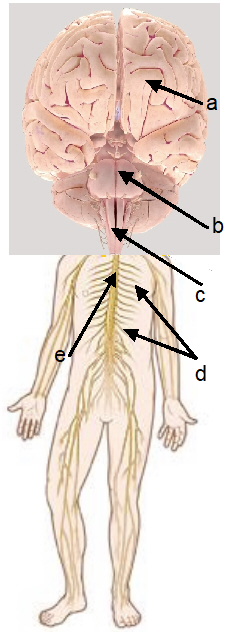Multicellular creatures started to develop various physiological systems with cells specializing in different functions. Thus came neurons, specialized cells capable of conducting electro-chemical signals, the building block of the brain.
With the development of neurons began the evolution of the nervous system and the brain. The nervous system comprises long neurons used to connect the brain with the body. They carry stimuli from various body parts to the brain and its response back to them. There are three types of stimuli: (1) unconscious and autonomic physical state stimuli from within the body requiring an instantaneous reflex response, (2) unconscious to subconscious external stimuli requiring instantaneous to immediate reactive response, and (3) conscious external stimuli with no immediacy requiring considered and thought out response.
The unconscious stimulus-response experience leaves its mark on the unconscious genetic memory without affecting the conscious memory, the subconscious and the conscious leave their mark both on the unconscious genetic memory and the conscious recallable memory.
The difference between the unconscious and conscious behaviour is then in stimuli only, the subconscious stimuli automatically sneak up on us without awareness while we are well aware of the conscious stimuli. We become fully conscious of our response to the subconscious stimuli only after responding to them.
To respond to each of the three types of stimuli, the human brain is equipped with three specialized parts: (1) the brain stem at the top of the spine acting as the final reflex response in addition to reflex loops along the nervous system to deal with the unconscious state stimuli from the body requiring an instantaneous response, (2) the subcortical limbic structures of neurons including the amygdalae to react to the immediate subconscious stimuli arising from internal unconscious or conscious memory or from the external world, and (3) the cerebral prefrontal part of the neocortex to consider and generate a thought-out response to conscious stimuli arising from the memory of past actions or from the external environment. The reflexive brain stem is the busiest of the three working 24/7 while the thinking prefrontal cortex, also called the executive brain, works only when engaged during the waking state. The subconscious limbic amygdalae are busy reacting to subconscious emotional stimuli requiring immediate response while awake or in dream sleep.

|
The human brain comprises a neocortex (pointed to by letter a in the figure below) with its prefrontal part specializing in conscious decision making and two subcortical parts known as the limbic brain (pointed to by b), which specializes in responding to our subconscious emotions, and a brain stem (pointed to by c) specializing in running our autonomic physiological functions without which we cannot survive. Note that d points to the nervous system and e to the spine through which the nerves connect the body wth the brain. |